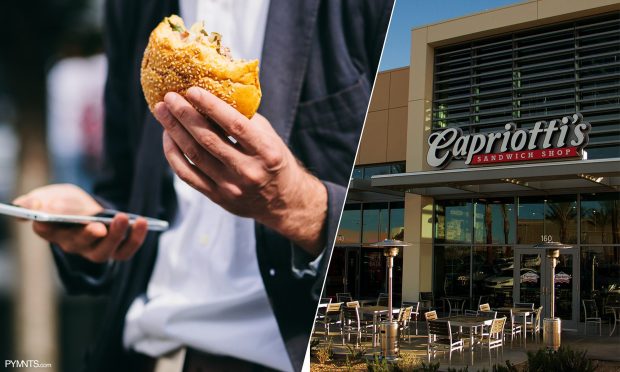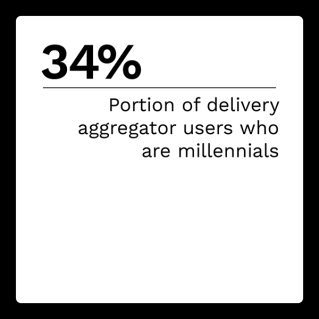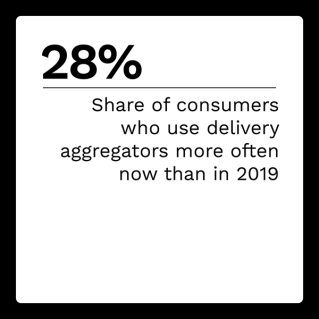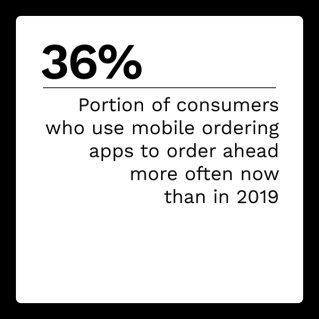Restaurants Align Marketing, Ordering Tech to Stay Ahead of Customer Preferences

As quick-service restaurants (QSRs) navigate industry changes, from labor shortages to emerging digital trends, stiff competition requires them to find ways to keep pace with their peers. By staying up-to-date on customer preferences and demands in areas such as ordering and pickup, QSRs can position themselves to stand out from their competitors.
Since the pandemic began, 42% of consumers have used at least one aggregator, and 15% have used three or more. Food orders through delivery aggregators and digital systems have shown continued year-over-year growth. Simplicity, convenience and time continue to be the most significant drivers of how consumers feel about their ordering experience. At the same time, and despite the easing of restrictions, consumer interest in indoor dining experiences has continued to decline. With the need to accommodate more order-to-eat orders and fewer dining room patrons, QSRs are rethinking everything they do, including how they use their physical space. That is leading to more space being used for operations and handling delivery and pickup orders.
In this month’s Order To Eat Tracker®, PYMNTS examines the current trends in consumer dining and ordering habits, how QSRs are keeping pace and the changes around the corner in restaurant automation and design.
Around the Order to Eat Space
 Forty-one percent of independent restaurants surveyed say they now operate virtual restaurants, sometimes known as ghost kitchens, that cater exclusively to online orders. The trend saw an initial increase following the shift to off-premise dining at the onset of the pandemic, and it is still going strong as demand for delivery continues unabated two years later. Due to that ongoing demand, 68% of those operating virtual kitchens said they intend to continue the arrangement permanently, and 46% said they have plans to expand virtual kitchen operations in the coming year.
Forty-one percent of independent restaurants surveyed say they now operate virtual restaurants, sometimes known as ghost kitchens, that cater exclusively to online orders. The trend saw an initial increase following the shift to off-premise dining at the onset of the pandemic, and it is still going strong as demand for delivery continues unabated two years later. Due to that ongoing demand, 68% of those operating virtual kitchens said they intend to continue the arrangement permanently, and 46% said they have plans to expand virtual kitchen operations in the coming year.
As restaurants at all levels of the industry continue to struggle with labor shortages, Starbucks is looking to address some of the problem by addressing employee satisfaction. The company has already had success with a strong focus on mobile ordering and payment technology that drew 400% order growth in the past five years, including 20% in the past year, but now it is switching focus to ensuring it has the employees to fill those orders. Starbucks’ employee satisfaction plan for 2022 comes with a $200 million price tag and includes measures such as an hourly pay increase, better employee benefits and changes to how it trains baristas.
For more on these stories and other order-to-eat developments, check out the Tracker’s News and Trends section.
Capriotti’s on Driving Customer Engagement With an Omnichannel Experience
When the pandemic permanently altered the restaurant landscape, those with strong digital footing ready to accommodate delivery and takeout found themselves at an advantage. As the industry continues to shift, staying competitive will mean keeping an eye out for what comes next.
In this month’s Feature Story, David Bloom, chief development and operations officer at Capriotti’s Sandwich Shop, talks about how the chain’s fast-casual dining experience is changing with integrated technology and omnichannel marketing that personalizes the customer experience and drives engagement.
PYMNTS Intelligence: Digital Ordering Demands Are Reshaping the Restaurant Industry
The pandemic brought a fundamental shift to the restaurant industry, with mobile apps, digital storefronts and contactless ordering and payment becoming a common feature. Labor shortages and the continued growth of pickup and delivery orders are creating new challenges that some hope to solve with technological innovation. At the same time, the shift toward off-premises and away from on-premises dining has some restaurants rethinking the very design of their facilities, as operational uses take over unused indoor dining space and restaurants refocus the dining experience to drive-thrus and outdoor seating.
This month’s PYMNTS Intelligence takes a look at how restaurants are looking to adapt, from automated voice systems in drive-thrus to drone delivery and everything in between.
About the Tracker
The Order To Eat Tracker®, a PYMNTS and Paytronix collaboration, examines the latest trends and developments shaping the order-to-eat space and how shifts toward ordering and eating away from dining rooms is driving changes in restaurant design and automation.

